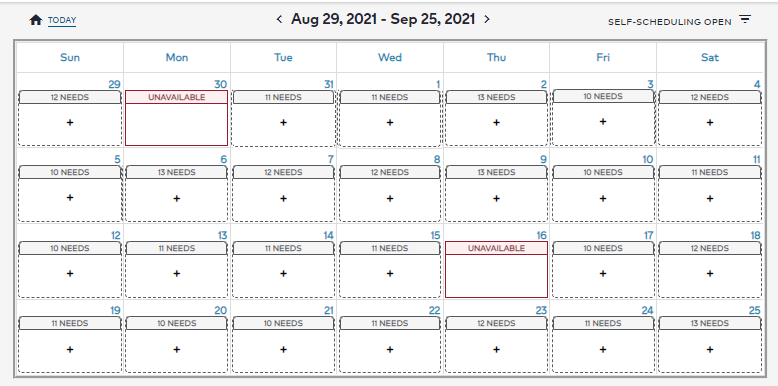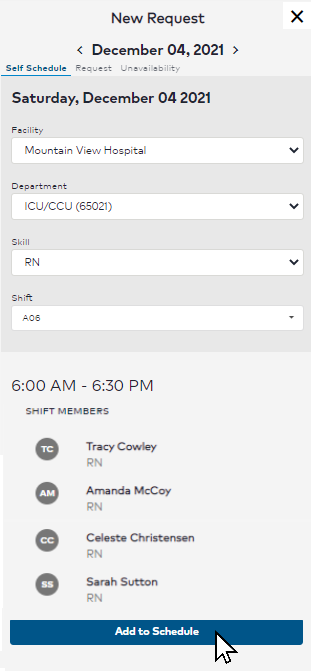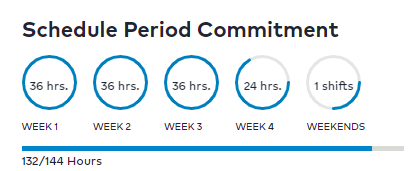![]()
![]()
If your department scheduling process includes a self-scheduling period, you will be notified when it’s time to make your scheduling choices. There are several department options for managing self-scheduling, such as requiring employees to self-schedule to their weekly commitments and allowing or preventing overtime during self-scheduling. As a result, what you see may be slightly different than the examples provided below.
When your self-scheduling period opens, you will receive a notification.
To self-schedule, click the forward arrow in the calendar header to view future schedule periods. The self-schedule period status displays as Self-Scheduling Open. The number of unfilled needs for each day are displayed.

Self-Scheduling Calendar View
You may see shifts in Scheduled status in your calendar view during self-scheduling. These shifts may be mandatory weekend rotations, shifts imported from the department default schedule, or shifts entered by a manager/scheduler. These shifts are not editable by employees. If there is an issue, contact your department manager or scheduler to make changes.

Self-Scheduling Side Panel
If your department does NOT require you to schedule to commitment, you will see the following in the calendar view:
If your department requires you to schedule to commitment, you will see the following in the calendar view:
During the self-scheduling window, you may withdraw a reserved or pending shift by clicking on the date then clicking the Withdraw button in the side panel.
Keep in mind that shift choices made during the self-scheduling period are not guaranteed and may change during the management review stage.

Example Shift Statuses During Self-Scheduling Period
If your home department requires you to work a specific number of hours per week and/or a specific number of weekend shifts per scheduling period, you can now easily see how close you are to fulfilling that commitment. The Schedule Period Commitment progress bar updates as you add and drop shifts for a schedule including during self-scheduling periods and posted schedules.
Your commitment is calculated per pay period. So you may work fewer shifts one week and more the next in order to meet your pay-period commitment.
There may also be department requirements to work a set number of weekend shifts and/or restrictions preventing employees from self-scheduling beyond their hourly commitments. The progress bar will display weekend commitments if needed. You will be alerted when submitting your schedule requests if you do not meet other requirements.

Schedule to Commitment Progress Bar
Weekend Commitments: Core employee weekend commitments for self-scheduling are calculated as follows:
Example:
Core Employee FTE = 0.70
Department Weekend Commitment Hours for Core Employees = 48 hours
Employee Weekend Commitment is 0.70 x 48 hrs. = 33.6 hrs., which is rounded up to three shifts for this employee.
Self-Scheduling Preferences (Defaults)
_____________________________________________________________________________________________________________________
MyScheduler 3.11.8.0